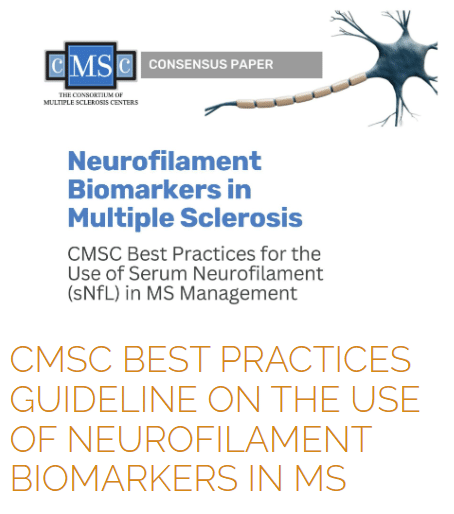Consortium of Multiple Sclerosis Centers (CMSC) Best Practices Guideline on the Use of Neurofilament Biomarkers in MS
Erratum: This document has been updated from the online version posted January 10, 2024. A duplicate Figure (3A) was removed and replaced with the correct data (Figure 3B).
Blood biomarkers have been long-awaited in the management of multiple sclerosis (MS). Technology has now advanced to enable measurement of serum neurofilament light chain (sNfL) via laboratory testing of blood samples from people with MS.
Neurofilaments are cytoskeletal proteins that are specific to the neurons. With neuronal cell death, neurofilaments are released into the blood and cerebrospinal fluid. Higher levels of sNfL in the blood are indicators of disease activity in people with MS. sNfL has been shown to correlate with:
- gadolinium-enhancing and T2 lesions on MRI
- MS relapse risk
- brain atrophy measures
- disability progression on EDSS
- response to disease-modifying therapy
Access CMSC Best Practices Guidance Here
Leading experts in the research and clinical use of neurofilament biomarkers in MS compiled their recommendations in a white paper, Neurofilament Biomarkers in MS: CMSC Best Practices for the Use of Serum Neurofilament (sNfL) in MS Management. Updated January 2024.
 Program Chair: Mark Freedman, HBSc, MSc, MD, CSPQ, FAAN, FRCPC
Program Chair: Mark Freedman, HBSc, MSc, MD, CSPQ, FAAN, FRCPC
Professor of Neurology, Director of MS Research Unit
University of Ottawa, Ottawa, Ontario, Canada
This article can be found here: https://www.mscare.org/page/NFL



